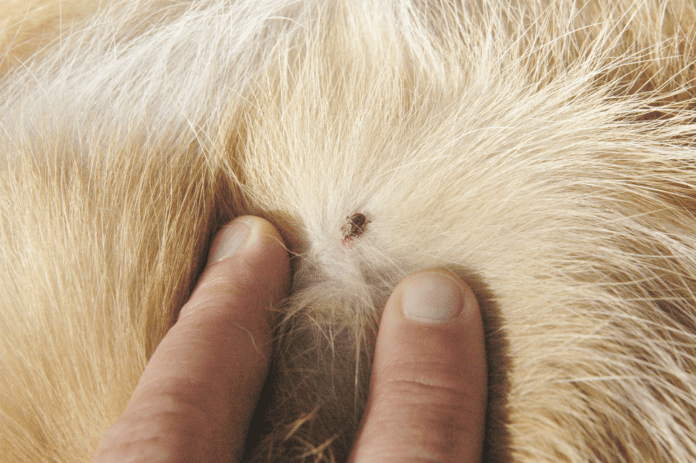HOW TO REMOVE A TICK
I have heard countless methods for tick removal: Paint a tick with nail polish and it will detatch from the dog to avoid being suffocated. Touch a just-extinguished match to the tick’s body so it pulls itself out. Pull while turning the tick clockwise. No – pull while turning counter-clockwise! All of these tactics are ineffective; don’t do any of them!
It’s actually quite simple: Just try to get a good grip on the tick, as close to the dog’s skin as possible, and pull it straight out. Notice that I said simple, not easy. Ticks are tiny. Your dog may be squirming. If his coat is thick, it might be hard to isolate the tick in your grip. You may end up pulling, or being impeded by, his hair, too.
And if your fingers are thick, you run the risk of squishing the tick between them as you pull, which can result in squeezing the contents of the tick’s mouth and guts into your dog! Ack! That actually increases the chance of infecting your dog with any disease-carrying spirochetes that the tick might be hosting!
Tweezers can be used more effectively than your fingers, but they, too, pose the risk of squeezing the tick and squirting that potentially pathogenic-filled tick spit into your dog’s body. Instead, use a tick pulling tool with a V-shaped slot. Slide the tool between your dog’s skin and the tick’s body, wedging the tick’s body into the tightest part of the tool’s crevice. When you feel that the tick is securely lodged in the slot, pull upward on the tool and – pop! The tick comes right out.
WHAT TO DO AFTER YOU REMOVE IT
After you remove the tick, clean the bite area with soap and water, hydrogen peroxide, or alcohol. Cleaning the wound – regardless of how small – will reduce the risk of secondary bacterial infection.
Schedule bloodwork to check for any tickborne diseases. It takes several weeks for most tick-borne diseases to be detectable on blood tests, so there is no need to rush your dog to the vet unless he starts to show clinical signs of illness. The most common include fever, lethargy, and lameness.
The ticks are lying in wait, so order your copy of Ticks And Canine Lyme Disease today!






